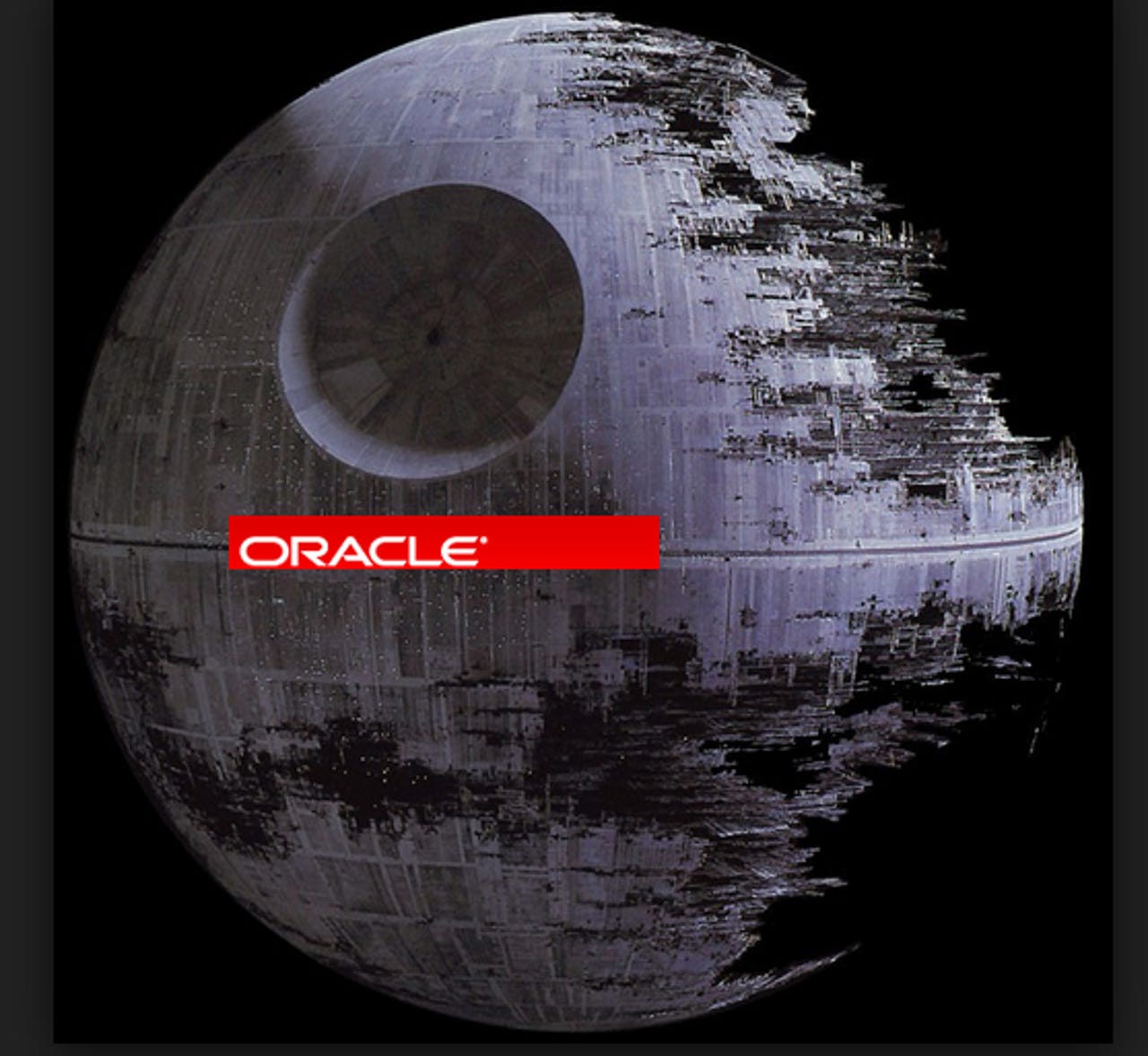Oracle: Can it handle tech curves, multi-front wars?

Oracle's fourth quarter sales miss — the second consecutive one — has analysts wondering if the company is capable of navigating the cloud computing and open source technology changes ahead.
The company's fourth quarter wasn't all bad, but Oracle struggled in emerging markets and Australia as deals were downsized or pushed out. Oracle executives brought the usual bravado to the earnings conference call, but without a strong quarter to back them, the digs about Workday and Salesforce fell flat.

As for some partnership with Microsoft being announced Monday, analysts had bigger concerns. In other words, Oracle's fourth quarter results did nothing to allay the concerns about the company going into earnings. If anything, Oracle's quarter only magnified those concerns.
More: 25 striking things Oracle said on its Q4 earnings call | Oracle's Q4 sales fall short | Oracle's Q4 and beyond: Five big issues
To complicate matters, Oracle's typical fix for revenue is to acquire and throw sales people at the problem. A fundamental shift in technology buying and sourcing may render Oracle's historical strategy moot.
Below is a look at what analysts had to say about Oracle. Across the board, there were doubts and worries that the tech shift will throw Oracle off. Technology buyers watch vendor health closely and may also begin wondering if the Oracle empire is showing a few cracks.
Cowen & Co. Peter Goldmacher:
We are concerned that Oracle is mistaking a secular change in the technology landscape with economic weakness and doubling down on distribution as the solution. We believe that we are in a major technology transition as IT buyers are increasingly turning to newer apps and data management technologies that offer more robust and flexible functionality at dramatically lower prices. Given that all of these established and emerging competitors have no mandate to actually make money, they have been able to flood the market with sales and marketing spending and materially compress normal technology transition time frames. We fear Oracle's incremental investments in distribution address the wrong issue, delay any material attempt at a remedy and will exacerbate its problems down the road.
Stifel analyst Brad Reback, who noted that there's no need to shut the door with the horse already out of the barn:
Given Oracle's second consecutive miss, we believe many investors will question if there are other forces at work besides the macro (i.e. competition, aging platform) and if ORCL is losing its relevance to newer technologies. While we believe there is clearly a shift taking place in customers' preferences from on-premise and proprietary solutions to more cloud-based and open platforms, we feel Oracle is already in the process of successfully making this transition to this new world (offers on-premise solutions, SaaS solutions, hosted solutions, etc.) and think the company will remain one of the most strategic IT vendors to large enterprises for years to come.
JMP Securities analyst Patrick Walravens:
The growth of cloud computing represents a major structural challenge for Oracle in our opinion, as cloud computing is growing 4x faster than IT spending and will account for 1 in every 7 dollars of IT spending by 2015 according to IDC — yet Oracle’s cloud subscription revenue accounts for only about 3% of total revenue. Moreover, we are concerned that Oracle’s strategy of adding sales people and shrinking account packages may have negatively impacted sales morale and significantly reduced the efficiency of Oracle’s sales machine.
Wedbush analyst Steve Koenig:
The company’s emphasis on its progress with Fusion HCM against Workday substantiates our belief that Workday is public enemy #1 at Oracle, and that management is determined not to lose the HCM market to a SaaS upstart, as it lost in CRM. Although our checks indicated ORCL is making progress with Fusion HCM, we don’t see ORCL blunting WDAY’s momentum in HCM any time soon, given Workday’s small size, pricing advantage, and the long runway for SaaS adoption in this market. The bigger prize is the potential for SaaS adoption in enterprise ERP, but it looks too early to tell when this wave will occur, let alone which vendor will be most dominant.
Add it up and Oracle is battling the innovator's dilemma as it tries to grow cloud and preserve maintenance and licensing revenue, a bunch of smaller cloud rivals, open source databases, a change in technology buying behavior and a dicey economy. Bottom line: Oracle has a multi-front war going and it will take a few years to determine how the company ultimately fares.